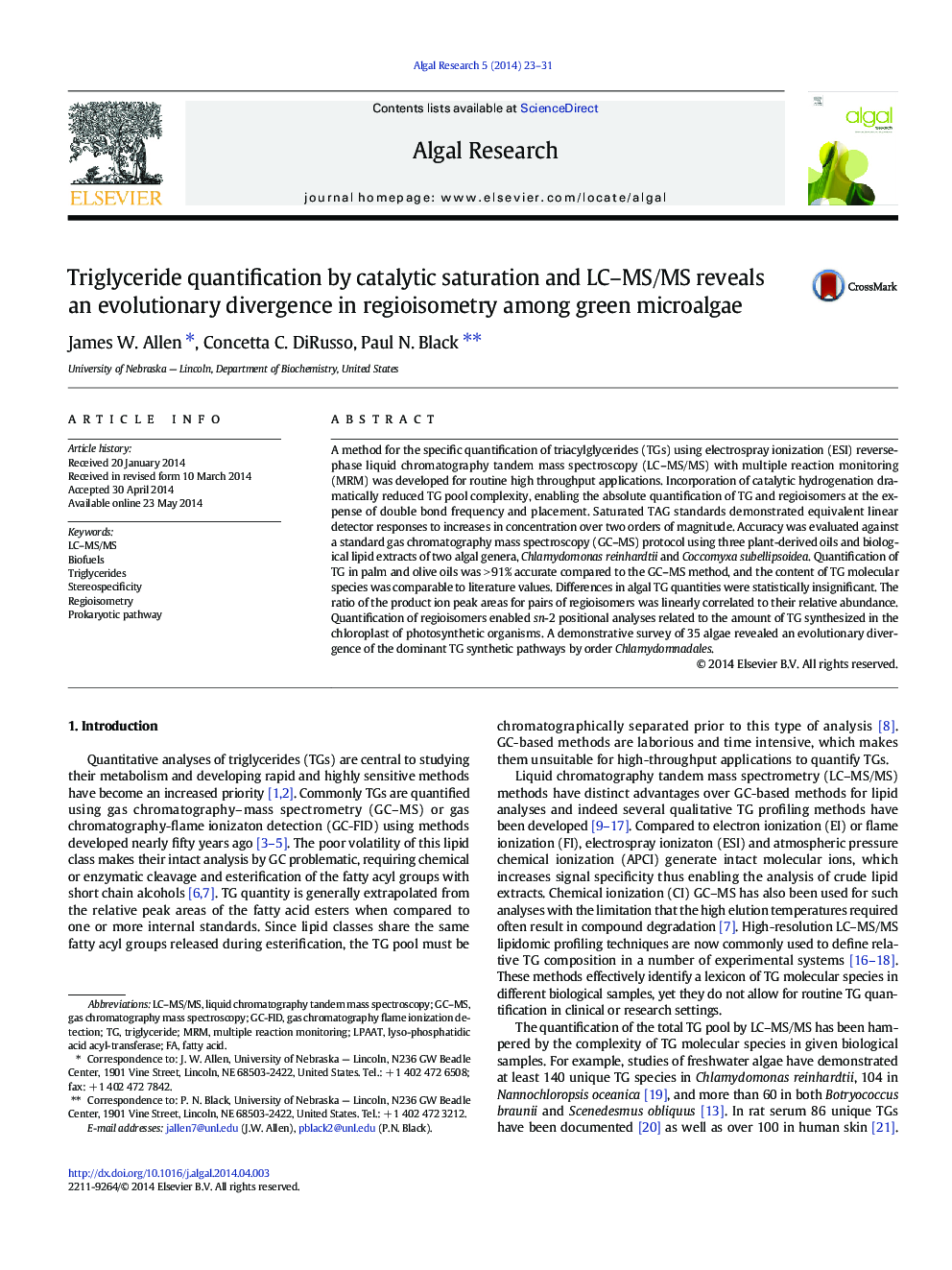| Article ID | Journal | Published Year | Pages | File Type |
|---|---|---|---|---|
| 1742078 | Algal Research | 2014 | 9 Pages |
•A straightforward, fast, and accurate LC-MS/MS TG quantification method.•Molecular ion models are determined for regioisomer quantification.•Nitrogen stress time course compares TG in C. reinhardtii with C. subellipsoidea.•Phylogeny-based screening reveals a divergence in TG synthetic routes.
A method for the specific quantification of triacylglycerides (TGs) using electrospray ionization (ESI) reverse-phase liquid chromatography tandem mass spectroscopy (LC–MS/MS) with multiple reaction monitoring (MRM) was developed for routine high throughput applications. Incorporation of catalytic hydrogenation dramatically reduced TG pool complexity, enabling the absolute quantification of TG and regioisomers at the expense of double bond frequency and placement. Saturated TAG standards demonstrated equivalent linear detector responses to increases in concentration over two orders of magnitude. Accuracy was evaluated against a standard gas chromatography mass spectroscopy (GC–MS) protocol using three plant-derived oils and biological lipid extracts of two algal genera, Chlamydomonas reinhardtii and Coccomyxa subellipsoidea. Quantification of TG in palm and olive oils was > 91% accurate compared to the GC–MS method, and the content of TG molecular species was comparable to literature values. Differences in algal TG quantities were statistically insignificant. The ratio of the product ion peak areas for pairs of regioisomers was linearly correlated to their relative abundance. Quantification of regioisomers enabled sn-2 positional analyses related to the amount of TG synthesized in the chloroplast of photosynthetic organisms. A demonstrative survey of 35 algae revealed an evolutionary divergence of the dominant TG synthetic pathways by order Chlamydomnadales.
